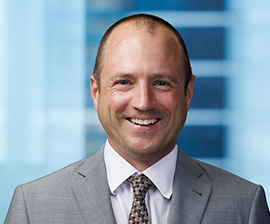Authored by: David Grace and Stephanie Gibbons
In a recent decision, the High Court of Australia considered the nature of an ‘understanding’ for the purposes of the restrictive trade practices provisions within Part IV of the Competition ...

In Ribeiro v. Workers’ Compensation Regulator [2019] QIRC 203, the Deputy President determined that an abattoir slicer’s heavy duties were not a significant contributing factor in the development of his umbilical hernia and thus upheld the decision to reject his application for compensation.
The decision is a reminder that the onus is on the injured worker to prove that their work was a ‘significant contributing factor’, not just a mere medical possibility.
The injured worker made an application for compensation for an umbilical hernia injury, which he said was sustained over a period of time from 2012 to 2017 as a result of his employment as a slicer in an abattoir. His employment included cutting meat carcasses weighing up to 20 kg. He did not actually lift the carcasses but moved them side to side and pushed them on to the packer. His application was rejected by the self-insurer, a decision confirmed by the Regulator and then appealed to the QIRC.
The injured worker called evidence from an ergonomist and a general surgeon who stated that heavy, repetitive lifting causes abdominal pressure which is ‘a’ cause of hernias. The Regulator called evidence from a competing general surgeon who opined that the primary cause of hernias is genetic and developmental factors.
In considering the competing expert opinions, the Deputy President did not consider the ergonomist to have the relative expertise to comment on the issue of the causal features of hernias. He carefully considered the evidence from the two general surgeons. The Deputy President accepted the surgeon called by the injured worker and found that heavy lifting could increase abdominal pressure which ‘could’ in turn cause a hernia.
Despite this finding, the Deputy President noted that, while experts can give evidence about what is ‘possible’, it is for the Tribunal to determine the facts and circumstances of the injured worker’s injury. This then allows a determination of what is ‘probable’ when reference is had to causation and determining whether work is a ‘significant contributing factor’.
In the present case, the Deputy President found that the injured worker had not proven work was anything more than a possible causative factor to the occurrence of his hernia. In particular, he noted the lack of ’lifting‘ involved in his duties, which was the basis of the expert evidence considering there was a possible link to his work.
In manual handling cases over a period of time, any expert is likely to find that work could cause an injury. Some might even work backwards and say that it was the probable cause of the injury.
However, bearing in mind that it is the worker who must prove the connection, such expert evidence will often be vulnerable to arguments from employers that the work link is speculative and often that the experts have relied on an exaggerated description of the work.
Ribeiro is a decision employers will be able to use to assist them to defend claims where there is no specific event and the only real argument is that the work involved manual handling so it ‘must’ have been the cause of the injury.
To make full use of these arguments it is crucial to properly brief the experts about the nature of the work and to ask the correct questions in what is a highly technical area of workers’ compensation law.
This publication is for information only and is not legal advice. You should obtain advice that is specific to your circumstances and not rely on this publication as legal advice. If there are any issues you would like us to advise you on arising from this publication, please let us know.
Subscribe to our interest lists to receive legal alerts, articles, event invitations and offers.




Cooper Grace Ward acknowledges and pays respect to the past, present and future Traditional Custodians and Elders of this nation and the continuation of cultural, spiritual and educational practices of Aboriginal and Torres Strait Islander peoples.
Fast, accurate and flexible entities including companies, self-managed superannuation funds and trusts.